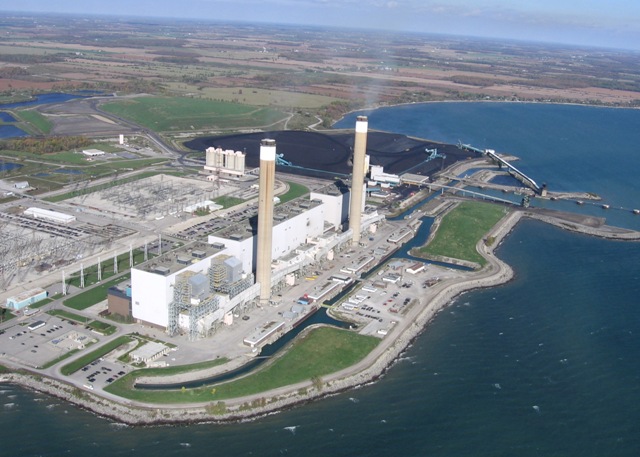The White House declared this past week "Energy Week" and offered up a few key points on which the Trump administration plans to focus to unleash what it calls a new American dominance in energy.
However, neither the initiatives nor the proposed policy changes hone in on where the world is heading: renewable energy, free of fossil fuels.
Instead, President Trump's six initiatives largely focused on the energy sources we've known and used for quite some time.
DON'T MISS: Trump EPA to hold unneeded 'critique' to challenge climate science
Axios outlined the six initiatives and asked if the administration's self-described "Energy Week" was future-forward or status quo.
The first initiative is probably the most significant: it calls for easing restrictions on financing overseas coal projects.
Former President Obama put a policy in place that restricts the U.S. Treasury Department from financing overseas coal plants.

Coal-fired Nanticoke Generating Station, Ontario, Canada, now being converted to 44-MW solar farm
The move followed similar steps by many international bodies, including the World Bank.
President Trump also mentioned coal—in his words, "clean, beautiful coal"—a record eight times during his speech on his energy initiatives.
Renewable energy sources, such as wind and solar, were not mentioned at all. Not once.
READ THIS: To honor Energy Week, lease an electric car: 10 lessons from new EV driver
In another initiative, the Trump administration plans to open new offshore areas to oil and gas leasing.
The president put this into action earlier this year with an executive order, which will give drilling companies greater access to offshore reserves.
At present, there's no real incentive for them to proceed with such projects, which are hugely expensive, since oil and gas prices from easier-to-obtain sources remain low.
![Wind farm outside Fort MacLeod, Alberta, Canada [photographer: Joel Bennett] Wind farm outside Fort MacLeod, Alberta, Canada [photographer: Joel Bennett]](https://images.hgmsites.net/lrg/wind-farm-outside-fort-macleod-alberta-canada-photographer-joel-bennett_100608716_l.jpg)
Wind farm outside Fort MacLeod, Alberta, Canada [photographer: Joel Bennett]
The president also called for a study on how to revive nuclear energy, which can be viewed as an effort to buy time without actually making any significant moves in the troubled field.
Trump also called for additional exports of natural gas to South Korea.
Currently, the U.S. exports its natural gas to countries with which it has free-trade pacts—but the president has previously said he may get rid of an existing South Korean trade deal.
CHECK OUT: Electric cars will cost less to buy than regular cars by 2025: analysis
That move would, of course, be counter-productive to his natural-gas export goal.
President Trump also plans to approve applications to export natural gas from Lake Charles, Louisiana.
It's a move that simply continues one made by former President Obama years ago.

America's Addiction to Oil Infographic (CJPonyParts.com)
Finally, plans for a new Mexican petroleum pipeline are expected to be finalized after the State Department approved production; it will send 108,000 barrels of refined oil (gasoline or diesel) from Texas to Mexico.
All the while, renewable energy sectors continue to grow at double-digit annual rates while much of the U.S. coal industry now faces bankruptcy.
In other words, the president's goal of U.S. "energy dominance" over the rest of the world may not mean much if the rest of the world's appetite for fossil fuels continues to falter.
_______________________________________________












